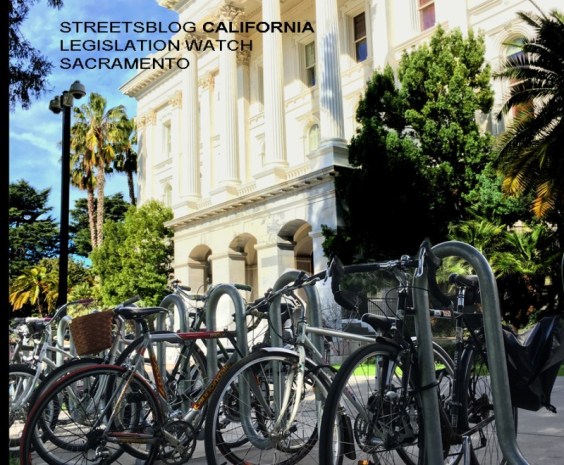Missing the Point on High-Speed Rail
10:11 AM EDT on July 6, 2009
Ed Glaeser is a fantastic economist. He has done magnificent work analyzing the economics of urban growth and written indispensable papers on the connection between housing regulations and migration.
But when the man picks up his pen to write a piece for public consumption, he tends to take complete leave of his senses. I realize that this is a common affliction among economists, but Glaeser suffers from a severe case of the syndrome.
In a Friday piece in the Boston Globe, Glaeser takes on the administration's push to fund construction of high-speed rail corridors around the country. In doing so, he combines the cognitive failures of every amateur train hater with a serious lapse in critical thinking.
He begins by making two very valid points: transit agencies are currently suffering serious and unfortunate shortfalls, and transportation funding generally is allocated where it's least needed -- to states with low levels of population, population density, and congestion.
But then he rapidly goes off the rails. Glaeser writes:
Now the administration wants Americans to envision high-speed rail lines in the wide-open spaces of Texas.
For most workers in America’s sprawling metropolitan areas, no train isgoing to drop them within walking distance of their home or job. InGreater Houston, only 11.6 percent of jobs are within three miles of anarea’s center and more than 55 percent of jobs are more than 10 milesaway from the city center.
Of course, Texas has four of the nation's fastest growing metropolitan areas, all within a few hundred miles of each other -- an ideal distance for high-speed rail. Austin, Dallas, Houston, and San Antonio are currently home to some 16 million people, and those metropolitan areas have added 3 million people since 2000 alone. Congestion is an issue within those metropolitan areas and will continue to worsen as they grow.
Not only is it entirely appropriate to build transportation infrastructure with future growth in mind, it's imperative. America's current sprawling growth pattern resulted in no small part from the mass construction of interstates and highways, which drew suburbanites to previously unsettled areas.
Moreover, Texan metropolitan areas are working to accommodate future growth in a denser fashion by building miles of metropolitan transit systems. Transit and rail are complementary technologies, each of which will increase the return on investment of the other.
Glaeser's errors continue.
He says:
There is a reason why 48 percent of Amtrak’s passengers travel on onlytwo routes: the Northeast Corridor and the Los Angeles-San Diego line.For travelers in the less-dense areas between the coasts, cars beattrains for modest distances and planes win over long hauls.
But of course, so many people use these lines because they are effective, which is not only a function of congestion. Rail carries passengers between New York and Washington in fewer than three hours, while drivers couldn't manage the trip in fewer than four even without congestion of any sort.
In other words, causation between mode choice, density, and service quality moves in several directions. Better service would lead to higher rates of travel and increased density. In the pitifully funded corridors where intercity services average 45 miles per hour or less, it's no wonder that ridership lags.
He goes on:
The national high-speed rail agenda is being pushed with claims thatthese trains will jump-start economic growth. No serious evidencesupports such claims. When new transportation does affect localeconomies, it generally does so by moving activity from one place toanother, not by creating nationwide benefits.
This is a strikingly economically ignorant paragraph. Because Glaeser doesn't mention specific claims about the ways in which rail construction might affect growth, we can't argue against his first statement.
But as Glaeser almost certainly knows, transportation investment has multiple effects. Some of these shift the relative attractiveness of one area relative to another. Other effects improve absolute economic performance, by facilitating agglomeration, increasing potential scale, and allowing for greater specialization and intercity trade (of goods and services).
Glaeser's assertion doesn't pass a basic sense check. Has America enjoyed net economic benefits from construction of its roads, rails, canals, ports, and airports? Unquestionably.
Glaeser then channels his inner Randal O'Toole:
The case for subsidizing urban mass
transit, like the MBTA, is certainly debatable, but it is much stronger
than the case for subsidizing rail links between non-coastal cities.The
MBTA’s core problem is that its operating expenses have always been
double its operating costs. To function, the system needs about $900
million a year in subsidies from taxes and local assessments, which
works out to slightly more than $2 a trip.Amtrak also regularly faces a $1 billion gap between revenues and
expenses, including depreciation, but since Amtrak carries only 29
million passengers each year, the per-trip subsidy tops $30.
Glaeser makes several key mistakes. First, the case for subsidizing transit is really pretty clear -- it is economically efficient to do so.
Second, it's absurd to leave out a discussion of highway spending. All modes are heavily subsidised by the government, and roads come nowhere close to paying for themselves. Reducing those subsidies would increase demand for transit and rail.
Further, congestion on highways indicates that roads are seriously underpriced -- another subsidy which cost Americans $78 billion in 2007.
And finally, Glaeser's Amtrak statistic is extraordinarily misleading, and bordering on dishonest. Amtrak routes include fast, competitive, and successful lines -- like the Northeastern corridor -- as well as congressionally mandated, slow, and poorly traveled ones. Amtrak makes an operational profit on its top corridors, but loses a lot of money on slow routes.
Glaeser would have you believe that all routes are money losers, when in fact it seems clear that high-speed, reliable service is extremely cost-effective.
Glaeser makes the same mistake in complaining that Amtrak is only 17 percent more fuel efficient than airlines. But efficiency varies with ridership; a full train on a medium distance run is much more efficient than a plane ride over a similar distance. In energy terms, it makes little sense to run a mostly empty train across the country at slow speeds, but that has nothing to do with the potential advantages of a quality high-speed rail network.
He closes by saying:
A rational transportation program would target money to the areas that
have the most congestion. A smart transportation policy would recognize
the wisdom of using our existing infrastructure more efficiently, with
the help of congestion pricing, rather than building more roads.
Unfortunately, wisdom seems to take wing whenever politicians start
envisioning the shining splendor of fast trains.
Glaeser is correct that a good place to begin addressing our transportation failures is by pricing congested highway and air routes more effectively.
But we have every indication that doing so would significantly increase demand for rail services, while also raising tens of billions of dollars every year that could be used to construct a rail system that would be cleaner and faster than driving or flying. Contra Glaeser, pricing our existing infrastructure would make it painfully clear just how badly we need an effective intercity rail system.
In environmental and economic terms, the case for major investment in high-speed rail is quite strong. Unfortunately, wisdom seems to take wing whenever economists start writing about public spending.
Stay in touch
Sign up for our free newsletter
More from Streetsblog USA
Talking Headways Podcast: Charging Up Transportation
This week, we talk to the great Gabe Klein, executive director of President Biden's Joint Office of Energy and Transportation (and a former Streetsblog board member), about curbside electrification.
Why Does the Vision Zero Movement Stop At the Edge of the Road?
U.S. car crash deaths are nearly 10 percent higher if you count collisions that happen just outside the right of way. So why don't off-road deaths get more air time among advocates?
Donald Shoup: Here’s a Parking Policy That Works for the People
Free parking has a veneer of equality, but it is unfair. Here's a proposal from America's leading parking academic that could make it more equitable.
Thursday’s Headlines Turn Up the Heat
Whether you realize it or not, climate change is here, and not just in the form of natural disasters.
Calif. Legislators Tackle AV, School Zone Safety
Are AVs freight trucks ready to be deployed on California roads with no one in them?




